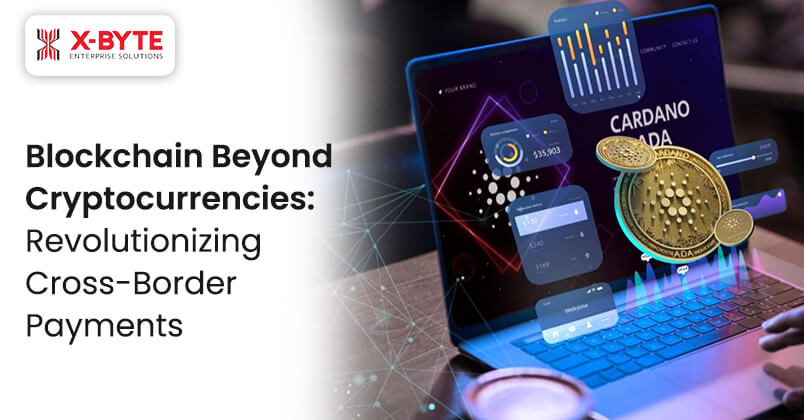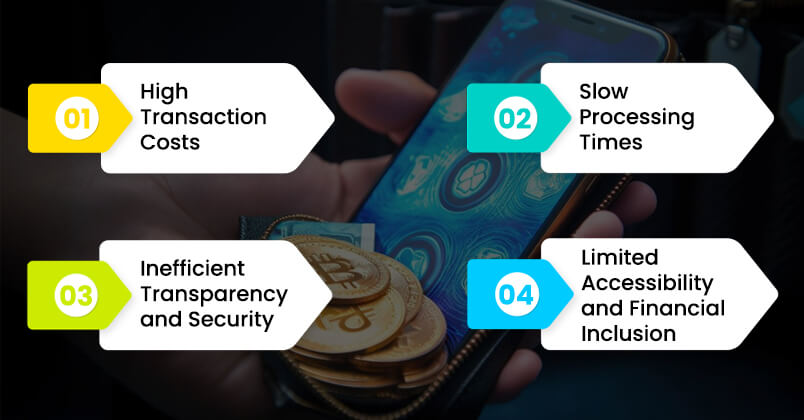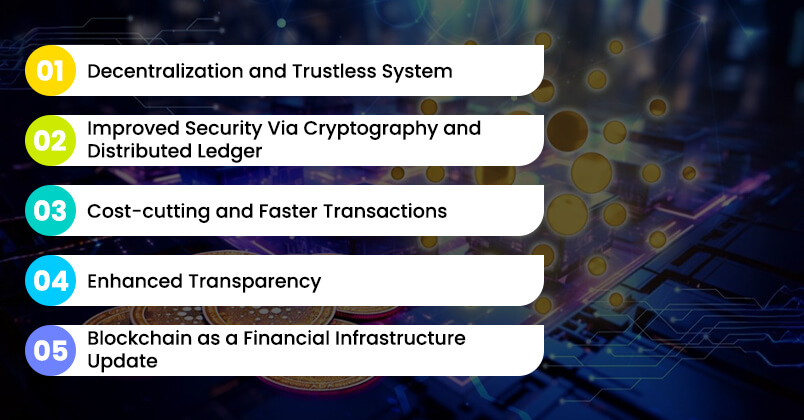-
solutinos
-
Hire
Frontend Developer
Backend Developer
-
NodeJS Developer
-
Java Developer
-
Django Developer
-
Spring Boot Developer
-
Python Developer
-
Golang Developer
-
Ruby on Rails Developer
-
Laravel Developer
-
.NET Developer
Technology
-
Flutter Developer
-
React Native Developer
-
Xamarin Developer
-
Kotlin Developer
-
Cross-Platform Developer
-
Swift Developer
-
MongoDB Developer
-
C Developer
-
Smart Contract Developers
Cloud
-
-
Services
Mobile Development
Web Development
- Work
-
Multi Services App
-
Food Delivery App
-
Grocery Delivery App
-
Taxi Cab Booking App
-
Multi Services App
-
OTT Platform APP
-
Social Media APP
-
Freelance Service App
-
Car Rental App
-
Medicine Delivery App
-
Liquor Delivery App
-
Sports Betting App
-
Online Coupon App
-
eLearning App
-
Logistics & Transportation App
-
Courier Delivery App
-
On-Demand Real Estate App
-
E-Wallet APP
-
Online Dating App
-
Handyman Services App
-
-
Process
-
Company

Quick Summary : Imagine sending money globally as easily as texting, with minimal fees and instant transfers. This vision is becoming a reality through blockchain technology. As global commerce grows, efficient cross-border payments are crucial. Blockchain has moved past crypto and is revolutionizing international finance by solving traditional payment system issues. Welcome to the future of money transfers, where transparency and financial inclusion lead the way.
We all wish to have the means to send money across borders as easily as we send a text message, with no hidden fees and waiting for the transactions to take days to clear. Unfortunately, that’s nowhere close to reality.
Cross-border payments are gradually becoming a dire requirement for seamless operations. Businesses and individuals are increasingly indulging in international payments, thus the emerging need for faster, affordable, and safer means of sending money across borders. However, the present-day systems for cross-border payments are characterized by inflated costs, long processing times, and a lack of transparency. That’s where—blockchain technology, the revolutionary innovation, takes the lead with the potential to change the face of global finance.
Let’s surf a little deeper into this article to know how a robust blockchain development firm is all set to uplift cross-border payments.
The Pain Points of Traditional Cross-Border Payments

Money transfer across borders ought to be seamless, but conventional frameworks lag with hidden challenges—high fees, slow processing, and security issues. Have a look at them in a little detail.
High Transaction Costs
The existing systems for transferring funds globally tend to have high transaction costs. A 2024 World Bank research report states that the average cost of sending money across nations is estimated to be around 6.65% of the amount being sent. Usually, these expenses arise out of intermediary charges, rates of currency conversion, and correspondent banks' expenses, all of which render the process a financial burden for individuals and businesses.
Slow Processing Times
Next to high transaction costs, slow processing times pose yet another challenge to traditional money transfer schemes. Cross-border payments take days to clear, as many intermediaries are involved, and checks on regulations are sought. This delay creates problems, especially for businesses and private individuals that depend on timely payments.
Inefficient Transparency and Security
Traditional systems are also shackled with problems that compromise transparency and safety. Payment status tracking may be complicated; transaction parties are sometimes difficult to identify. This inefficiency in transparency exaggerates the risks of cyberattacks and threats, withering the core base securing the process.
Limited Accessibility and Financial Inclusion
Traditional cross-border payment systems exclude underbanked populations, especially in developing countries with limited banking access. Complex account requirements and minimum balances prevent many from participating in international transactions. Limited banking infrastructure and strict currency controls in some regions further restrict people's ability to send or receive international funds.
Blockchain: A Standard Shift in Cross-Border Payments

With the advancement of blockchain, cryptocurrency—its most well-known application—is beginning to capture interest. Cryptocurrencies like Bitcoin, Ethereum, and Ripple provide digital currency options that operate independently of any governing body or institution. Beyond digital currencies like crypto, blockchain technology has applications in many different industries. In finance, it makes international transactions (cross-border) payments secure and effective, reducing the need for middlemen and lowering transaction costs.
The implementation of proficient blockchain development services presents you with an escape route from the numerous challenges of traditional cross-border payments.
| Blockchain 1.0 | Blockchain 2.0 | Blockchain 3.0 | Blockchain X.0 |
|---|---|---|---|
| The initial phase brought blockchain technology into the spotlight through its use in cryptocurrencies, emphasizing its role in transaction-related applications. | The next phase introduced smart contracts, enabling the management of financial products while preserving the foundational capabilities of blockchain. | This iteration broadened blockchain's reach beyond financial services to areas such as government, healthcare, and the legal system. | The ultimate vision is a public blockchain service that everyone can access, seamlessly integrated with artificial intelligence throughout society. |
Using decentralization, cryptography, and distributed ledger technology—international money transfer systems have become faster, cheaper, and more secure.
Join the Future of Global Finance - Implement Blockchain for Seamless Payments! Hire us for blockchain development solutions!
Decentralization and Trustless System
A blockchain is inherently a decentralized, trustless system where transactions are verified by the central authority in traditional terms. These transactions across blockchains are validated from a network of computers. Thus, this obviates the need for intermediaries, lowering costs and improving efficiency. The total value of cross-border payments is expected to reach $290.2 trillion by 2030, up from $190.1 trillion in 2023.
Improved Security Via Cryptography and Distributed Ledger
Cryptography secures the operations of blockchain so that transactions become unalterable. Furthermore, distributed ledger technology offers a transparent and auditable history of every transaction and, as such, an extremely high level of accountability.
Cost-cutting and Faster Transactions
Payments via blockchain would be much faster and less expensive when compared to conventional means. Blockchain-based cross-border transactions cost 40–80% less than traditional transfers. Transactions are, therefore, almost instant, with fees being a fraction of those charged by traditional financial institutions. Blockchain development services step into the picture here—offering businesses the solution to use blockchain for secure and efficient payment solutions.
Enhanced Transparency
Among these features, perhaps the most important is the enhanced security and transparency offered by blockchain. The audit trail created by its immutable ledger permanently records each transaction and cannot be changed, making it very difficult to commit fraud or cloak illegal activities.
Blockchain as a Financial Infrastructure Update
Blockchain technology isn't just changing how we send money across borders; it's causing a revolution in the whole financial system. It uses decentralization and systems that don't need trust, which means we don't need middlemen anymore. This cuts costs and reduces processing times. Better security from code and shared record-keeping make sure no one can mess with transactions or tamper ledgers. What's more? It brings unprecedented traceability and transparency.
Blockchain Solutions for Global Payments
An expert blockchain development firm introduces you to powerful blockchain solutions—from blockchain-based payments to smart contacts in payment processing—refining how your funds traverse across borders.
|
Blockchain-Oriented Payment Systems Various blockchain-based payment systems have continuously been upgraded with different features and functionalities. For instance, Ripple is a payment protocol that uses a distributed ledger to perfectly carry out real-time gross settlements, currency exchange, and remittance payments. |
Stellar for Cross-Border Payments Stellar is a blockchain-based platform designed mainly for navigating cross-border payments and remittances with ease. It uniquely suits individuals and small enterprises that seek affordable ways to send money across the border. |
|
Central Bank Digital Currencies Central Bank Digital Currencies are right now gaining acceptance as a probable solution to cross-border payments. CBDCs are digital currencies issued and regulated by a nation's central bank; they can facilitate cross-border payments by providing enhanced mechanisms, reducing the number of intermediaries, and lowering the costs incurred for currency exchange. |
Smart Contracts in Payment Processes Smart contracts for payments provide much of the automation for payment processes, reducing the chances of error. These self-executing contracts embedded in the blockchain can automate many aspects of the payment itself, such as escrow, scheduling, and dispute resolution. A competent blockchain development company can help execute these complex solutions. |
Benefits of Blockchain in Global Payments
Empower your business growth with perfect blockchain development services and secure it with blockchain’s unconditional benefits in terms of redefining international transactions.
Lower Fees and Increased Efficiency
Blockchain provides many benefits for cross-border payments, with the greatest being lower fees and higher efficiency. For enabling a seamless interrogation of payment systems through dedicated automated processes for payments, blockchain could cut transaction and processing times drastically, along with the cost, in the most effective way.
Reduced Dependence on Intermediaries
Reduced dependence on intermediaries is another salient point of advantage for blockchain within cross-border payment facilities. For the development of increased financial autonomy, the blockchain gives individuals and businesses alike the ability to bypass decades-old financial institutions. This primes a greater control over transactions and lessens the burdens of payment systems.

Don't let the blockchain revolution pass you by! Partner with X-Byte Enterprise Solutions for feature-rich crypto-wallet development services!
Connect Now! Connect Now!Financial Inclusion Promotion
Blockchain technology is another potential means of advancing financial inclusion for populations that lack access to banking services. The inclusion to access financial services for individuals and businesses in isolated areas can help mitigate the financial divide, thus unlocking a platform for economic advancement in regions traditionally excluded from the financial system.
Enhanced Security and Transparency
Blockchain technology provides superior security and transparency in global payments through its decentralized nature and cryptographic security. Each transaction is recorded in a distributed ledger, creating an unalterable audit trail that reduces fraud risks and builds trust in international transactions.
Real-Time Settlement and Liquidity Management
Blockchain enables instant transaction settlement, unlike traditional cross-border payments that take days. This 24/7 real-time processing reduces the need for businesses to hold large amounts of capital in different currencies.
Ultimately, where we want to get to is the ability to instantly settle any payment in any currency, anywhere, any time,” says Jason Clinton, Head of Financial Institution Group Sales Europe at J.P. Morgan. “And that will probably require using blockchain technology.
Real-World Applications
Plenty of enterprises and financial firms have already initiated and undertaken trials of blockchain technology-supported payments. MoneyGram, for example, has formed a partnership with Ripple for cross-border payments using Ripple's native currency, XRP. With this partnership, MoneyGram has significantly minimized costs and processing times for payments.
Another case is Veem, a peer-to-peer payment systems platform enabling small businesses to cross borders using blockchain technology. With its services, Veem allows small businesses to save in terms of both time and money while dealing with international transactions.
All these famous case studies are just a few illustrations of the advancement of blockchain in changing global trade toward economic development.
Role of Cryptocurrency Development Services
In this respect, cryptocurrency development services stand at the heart of the matter. These worthwhile services develop financial solutions for businesses that are accessible and inclusive, utilizing the power of blockchain and opening new possibilities for people and businesses in underprivileged regions.
The Future of Blockchain in Cross-Border Payments
The Promising Outlook for Blockchain in Cross-Border Payments
The outlook for blockchain is bright in cross-border payments. With the advancement of technology and growing levels of acceptance, the modern world will get to see more efficiency and savings in costs. During the initial six months of 2024, companies specializing in cross-border payments secured $318.4 million through venture capital funding.
Key Areas of Future Improvement
Future improvements are expected to provide better scalability, wider acceptance and compliance with government and financial laws, and interconnectivity of different blockchain networks. Scalability is an important issue that needs to be solved for the blockchain to serve increasing volumes of cross-border payments.
Regulatory acceptance
The acceptance of regulations, in turn, will provide mainstream acceptance. Regulations that are clear and consistent will provide companies and financial institutions with the confidence to invest in blockchain-based payment solutions. Interoperability between all blockchain systems will assist in ensuring the payments can be readily transferred between various systems.
Challenges and Hurdles in Blockchain Adoption
Although claims can be made in favor of blockchain technology, several potential challenges and hurdles limit its expansion in broad medical markets. The uncertainty in regulatory compliance, current technical complexity, and lack of awareness are the actual problems. This requires the concerted effort of governments, businesses, and technology providers to tackle these drawbacks. An experienced blockchain development firm can help your business flawlessly cut through these complexities and develop reliable, compliant, and scalable solutions.
Custom Solutions and Web3 Development
Custom blockchain app development is a pillar that provides tailored solutions for particular business needs. A web3 development company can extend these applications, particularly reshaping the mobile application industry, to decentralized web technologies. An efficient crypto token developer can create custom-made tokens to be used for certain payment scenarios.
Bottom Line
Cross-border payments by individuals and businesses are on the verge of transformation into a revolutionary concept with the application of blockchain technology—where a faster, cheaper, and more secure mode of international transactions is possible through decentralization, cryptography, and distributed ledger technology.
Moreover, the fruitful benefits of blockchain are apparent as blockchain technology sees expansion and more organizations turn to it. To conclude—blockchain technology holds way more than cryptocurrencies, having undeniable significance in the present and future of global payments.
